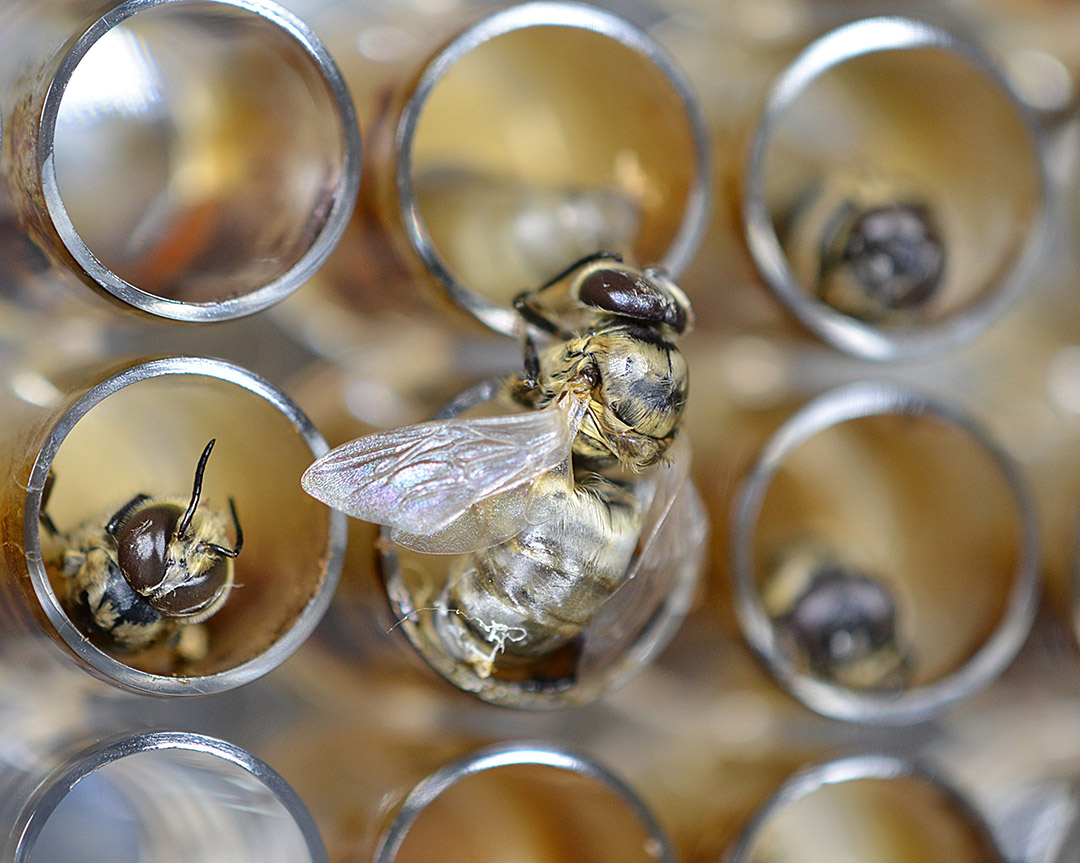
WCVM members excel in USask's 10th Images of Research contest
In its 10th year, the University of Saskatchewan's (USask) Images of Research contest once again highlighted the remarkable impact of its researchers, scholars, and artists, with standout submissions from the Western College of Veterinary Medicine (WCVM).
By WCVM TodayIn its 10th year, the University of Saskatchewan's (USask) Images of Research contest once again highlighted the remarkable impact of its researchers, scholars, and artists, with standout submissions from the Western College of Veterinary Medicine (WCVM). WCVM members took home awards in three of the eight photo categories, including the Grand Prize.
With over 100 entries spanning 14 USask colleges, schools, and research institutes, this year's contest garnered significant attention, accumulating over 16,000 views and 2,800 public votes.
Grand Prize: “A Curious Male Honeybee”
Submitted by: Dr. Marina Carla Bezerra da Silva (DVM), PhD student, Department of Veterinary Pathology, WCVM

Funding: Mitacs, Bayer, Interprovincial Undergraduate Summer Research Award (IUSRA), Saskatchewan Beekeepers Development Commission, Manitoba Canola Growers, SaskCanola, British Columbia Blueberry Council, BASF, personal Dean’s scholarship.
Best Description: “Ice Ice Baby”
Submitted by: Dr. Kayla Buhler (PhD), alumnus, Department of Veterinary Microbiology, WCVM
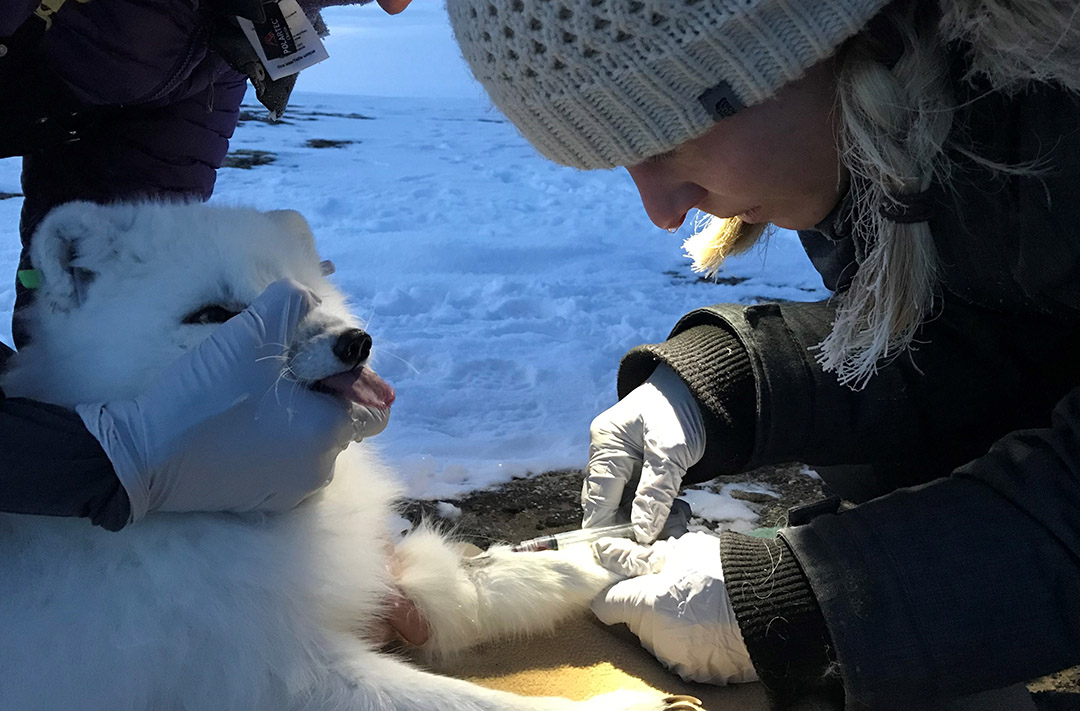
Everything about this photo screams COLD! This was taken during my second field season, where we were working on screening Arctic foxes for a variety of climate sensitive diseases. The icicles on my hair and nose testify to the weather conditions, which were approaching -30°C. Have you ever tried to take blood in freezing temperatures? It’s no small feat, as the blood freezes in the syringe while it’s collected. As for the fox, she fully recovered after light sedation. She was much more comfortable than the researchers surrounding her, with her thick layer of fur and having evolved to living in arctic conditions. All for the love of science!
Funding: Weston Family Foundation, ArcticNet, NSERC
Viewers’ Choice: “Cutest Research I Do!”
Submitted by: Mihiprabha Rathnayake, PhD student, Department of Veterinary Pathology, WCVM
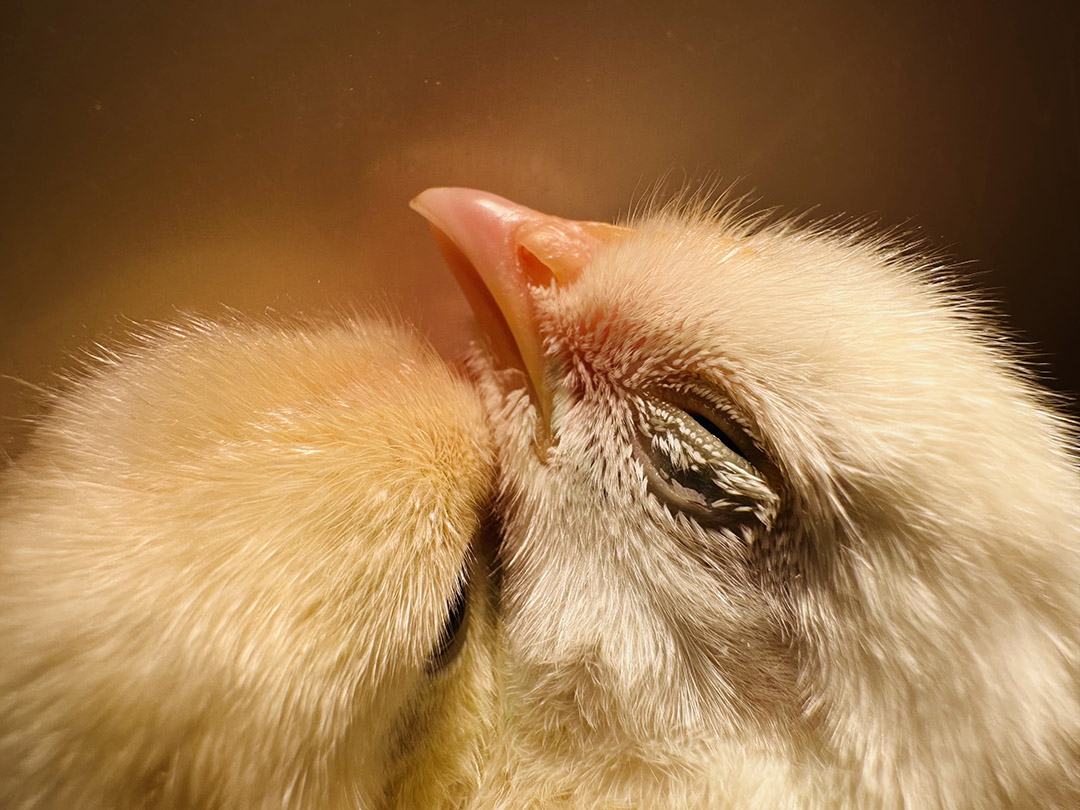
Happiness overtook me, when I saw my cute research partners it sprinkled a feeling of comfort over me; consolation and protection all over the dark and warm brooder room. Without even realizing it, they are partaking in a project that can save the world, specifically, solving the antimicrobial resistance issue that is negatively affecting people, animals and the environment. Prodigious tiny creatures in the planet called “probiotics” can protect chicks from infectious diseases by colonizing the guts of chicks, even before they are hatched. Without any hesitation, say “Good-Bye!!” to antibiotic use in the poultry industry and cheers to the cutest research I do!
Funding: Canadian Poultry Research Council, Result Driven Agriculture Research, Ministry of Agriculture - Government of Saskatchewan
Arts in Focus: “Wakiŋyaŋ Tuŋwaŋpi (When you see lightning but don’t hear thunder)”
Submitted by: Raina Buffalo Pechawis, undergraduate student, Department of Art and Art History, College of Arts and Science
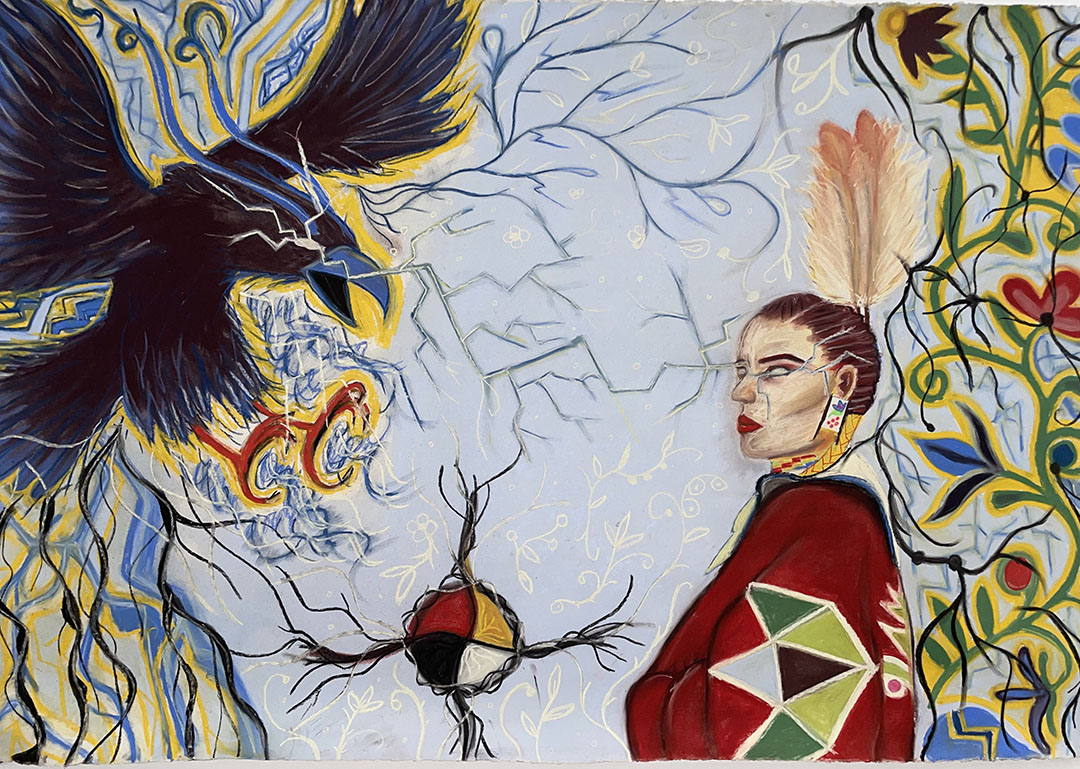
Community Impact: “Fire Season Reflections”
Submitted by: Lindsay Carlson, PhD student, Department of Biology, College of Arts and Science
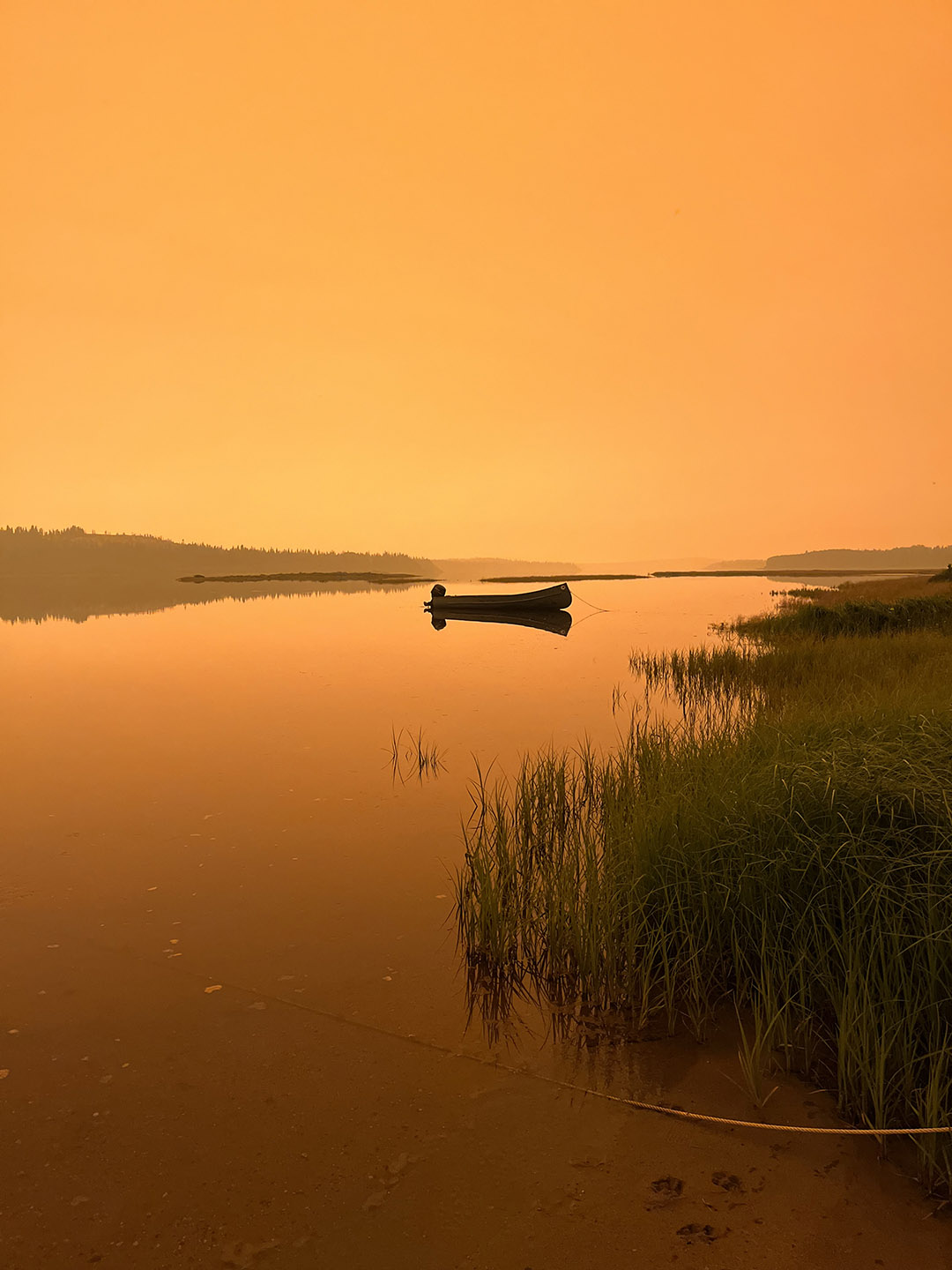
Funding: Niskamoon Corporation, Eeyou Marine Region Wildlife Board, Arctic Goose Joint Venture, Ducks Unlimited, Dr. Bruce D.J. Batt Fellowship in Waterfowl Conservation
More than Meets the Eye: “Worm Hurricane”
Submitted by: Amir Sabeti, PhD student, Department of Biology, College of Arts and Science
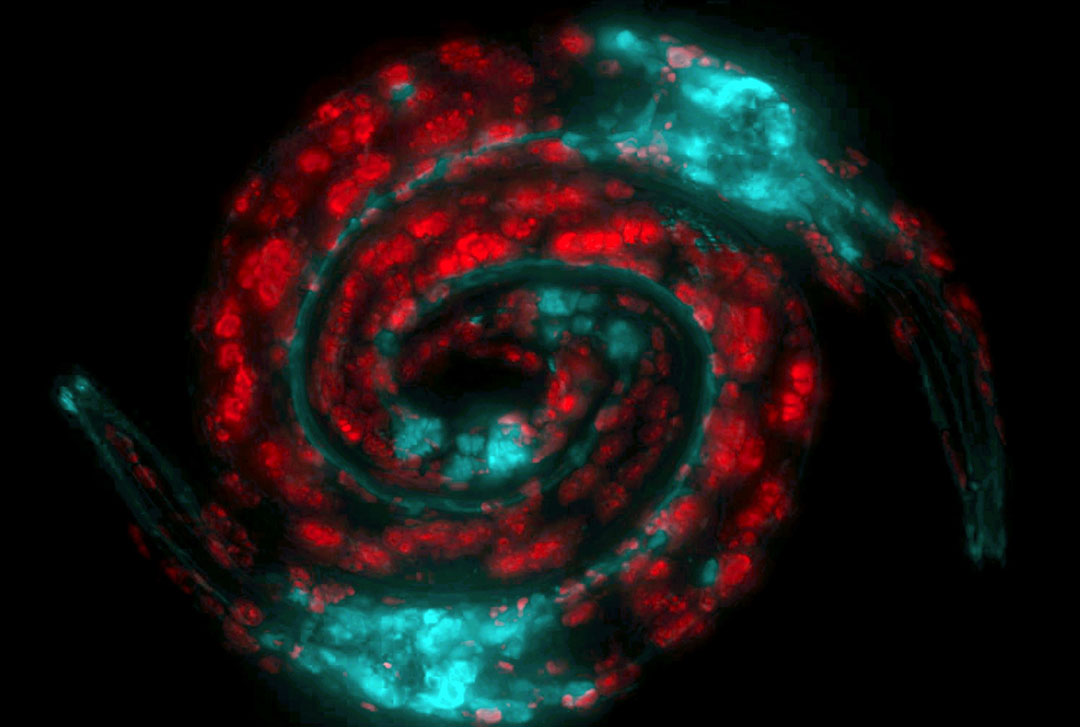
Funding: Natural Sciences and Engineering Research Council of Canada (NSERC)
Research in Action: “Unveiling Arsenic: Protecting Fish and Humans”
Submitted by: Mahesh Rachamalla, PhD student, Department of Biology, College of Arts and Science
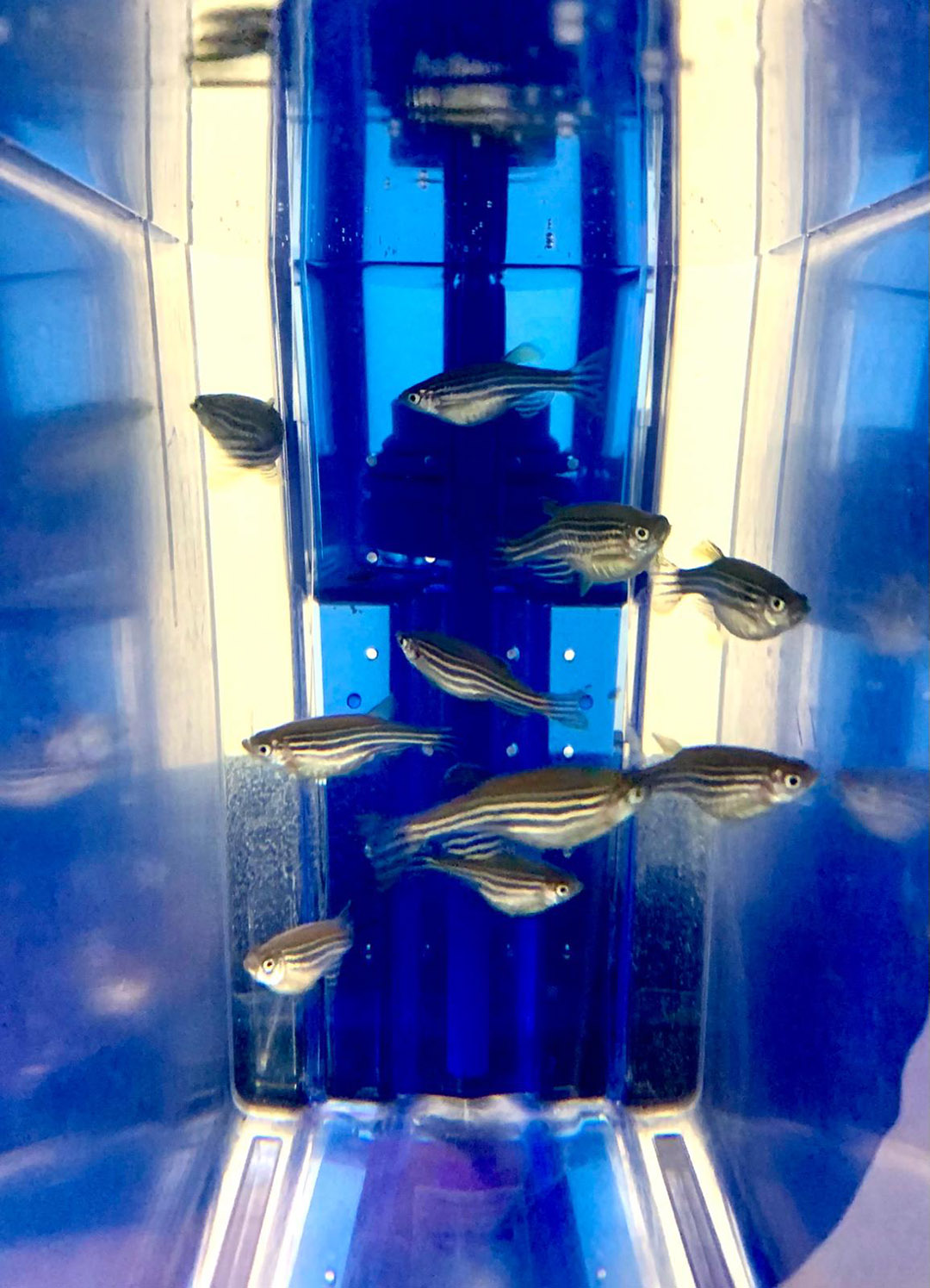
From the Field: “Family of Fungi”
Submitted by: Olivia Yurach, MSc student, Department of Soil Science, College of Agriculture and Bioresources
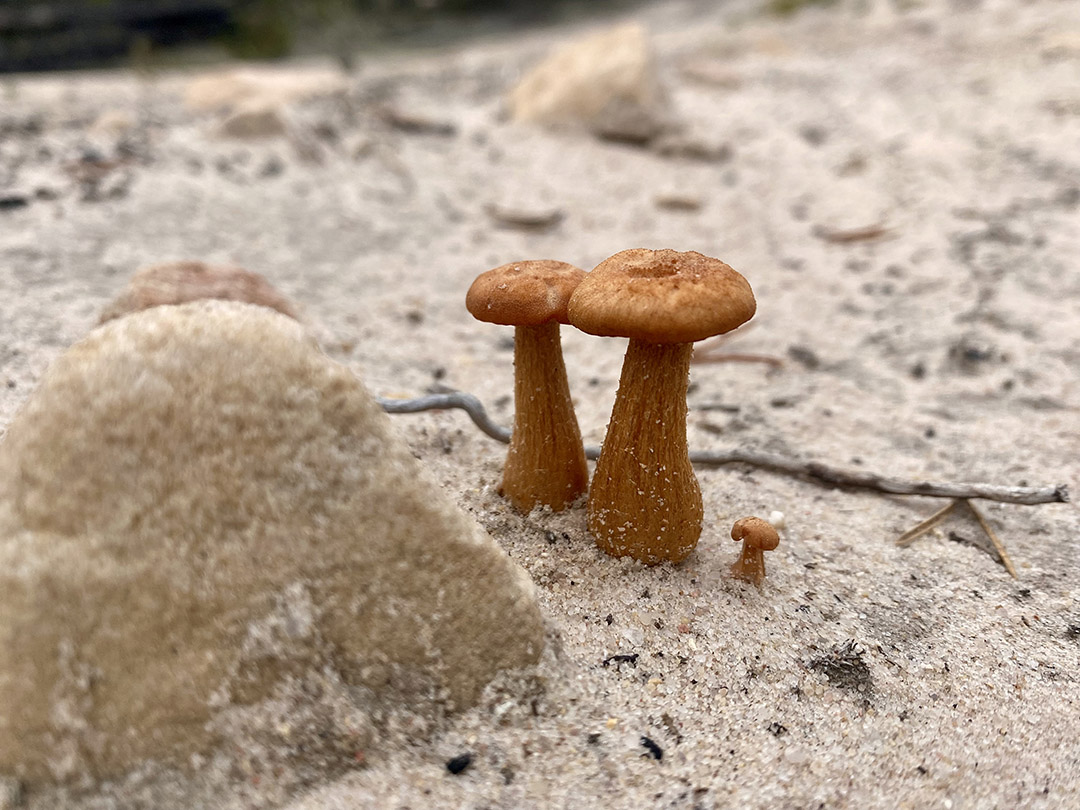
In northern Saskatchewan, ecological restoration research is seeking to understand recovery post-disturbance. These mushrooms were spotted while collecting blueberry seeds for propagation so we can study the role moss and blueberries have on boreal soil systems.
View all winning and runner-up images here and all 2024 submissions here.
